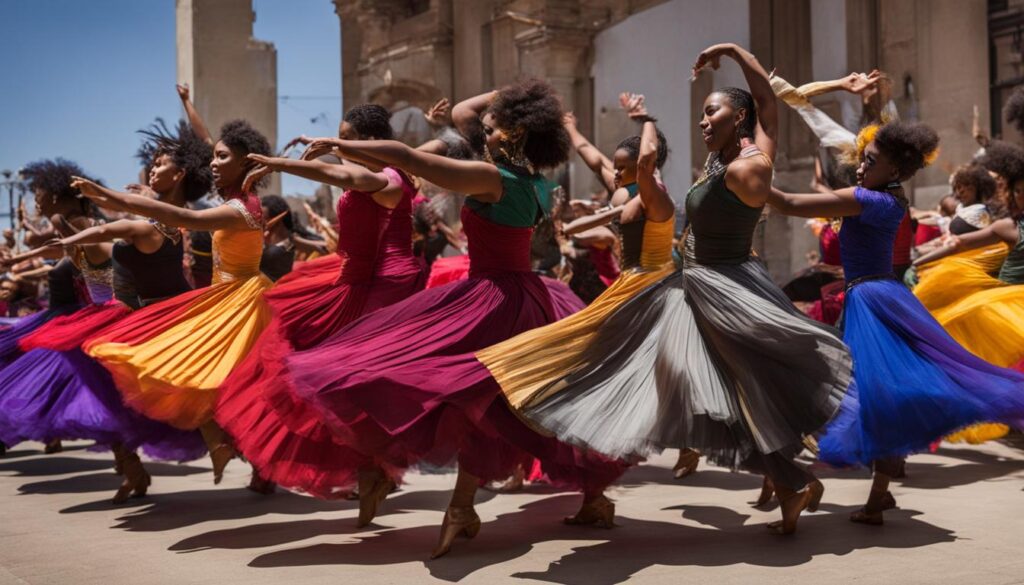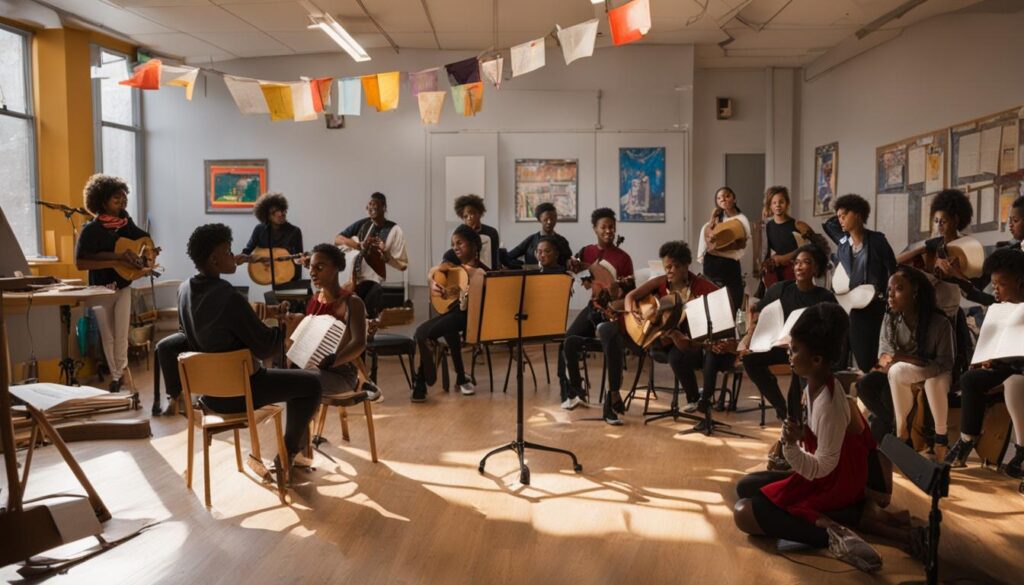Art has always held a special place in human civilization. It is a powerful means of expression that has the ability to evoke emotions, challenge perspectives, and shape culture. But what exactly is art? How do we define it in our own terms?
Defining art may seem like a complex task because it encompasses a wide range of creative expressions. At its core, art is a form of human expression that goes beyond words and language. It has the remarkable ability to capture the essence of the human experience and communicate it to a global audience.
Key Takeaways:
- Art is a form of human expression that evokes emotions and stimulates thoughts.
- It transcends language and cultural barriers, allowing artists to communicate their ideas to a global audience.
- Defining art is a personal journey that involves exploring its meaning and purpose.
- Art takes shape in various forms such as painting, sculpture, literature, and music.
- Throughout history, art has reflected the values, beliefs, and aspirations of different societies.
The Philosophy of Art: Exploring Meaning and Purpose
Art is a profound expression of human creativity, encompassing a multitude of forms and interpretations. At its core, art raises fundamental questions about its meaning and purpose, inviting us to delve into the deeper realms of philosophy. This exploration allows us to appreciate the intricate relationship between art and the human experience, broadening our understanding and perspective.
Art is not solely about aesthetic pleasure; it holds a myriad of meanings that extend beyond the surface. Some argue that art exists to challenge the status quo, inciting social change and prompting us to question our values and beliefs. Others see art as a conduit for personal expression, giving voice to emotions and experiences that may be difficult to articulate in words alone.
“Art is the lie that enables us to realize the truth.” – Pablo Picasso
The quote by Pablo Picasso encapsulates the profound impact of art in revealing deeper truths. It serves as a reminder that art has the power to transcend mere visual representation and tap into the essence of the human condition. Through art, we explore the depths of our emotions, ponder the mysteries of existence, and challenge our own perspectives.
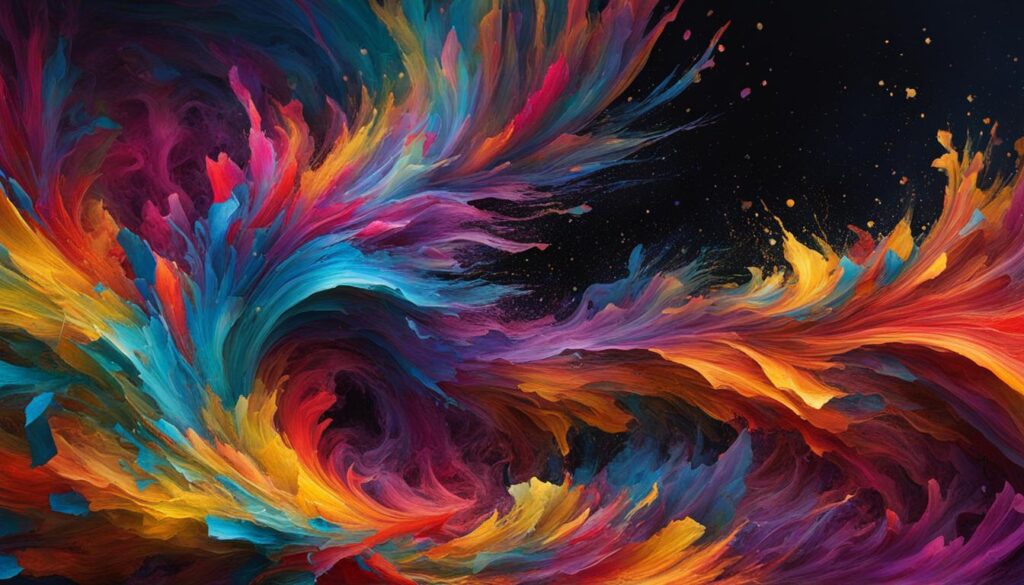

| Artistic Expression | Meaning |
|---|---|
| Painting | Visual representation and interpretation of the world |
| Sculpture | Three-dimensional form that brings art to life |
| Literature | Transportation to different worlds and exploration of diverse perspectives |
| Music | Transcendence of language to touch the soul |
Exploring the Purpose of Art
While the meaning of art may vary from person to person, its purpose remains a subject of philosophical contemplation. Some argue that art has a cathartic function, allowing individuals to experience emotional release and healing. Others believe that art serves as a vehicle for social commentary, raising awareness and promoting dialogue on important issues.
No matter the purpose attributed to art, its significance is undeniable. It has the power to inspire, challenge, and transform both individuals and society as a whole. By engaging with art and exploring its meaning, we embark on a journey of self-discovery, empathy, and intellectual growth.
The Essence of Art: Expression, Creativity, and Emotion
Art is a medium of expression that encompasses the essence of human creativity and emotion. It serves as a powerful tool for artists to communicate their innermost thoughts, feelings, and experiences to a global audience. Through their creative energy, artists capture the beauty, complexity, and diversity of the human experience.
Artistic expression is a unique form of communication that transcends language and cultural barriers. It allows artists to convey their ideas, perspectives, and visions in a visual and tangible way. Whether it is a painting, a sculpture, a piece of literature, or a musical composition, each artwork speaks volumes about the artist’s passion, imagination, and unique worldview.
Creativity plays a central role in the creation of art. It is the driving force behind the innovation and originality that artists bring to their craft. Artists use their creative abilities to explore new ideas, experiment with different techniques, and challenge conventional norms. The freedom to express oneself creatively allows artists to push boundaries, break molds, and discover new possibilities.
Emotion is an integral element in the creation and appreciation of art. Artists infuse their works with a wide range of emotions, from joy and love to sadness and anger. Through their art, they evoke emotional responses in the viewers, inviting them to connect on a deep and personal level. Emotions bring art to life, making it relatable, impactful, and transformative.
The Power of Art Quotes:
“Art enables us to find ourselves and lose ourselves at the same time.” – Thomas Merton
“Art is the lie that enables us to realize the truth.” – Pablo Picasso
In summary, the essence of art lies in its ability to express the unspoken, unleash boundless creativity, and evoke profound emotions. It is a universal language that connects individuals across cultures, generations, and backgrounds. Through art, we can explore the depths of human experience, appreciate the beauty of diversity, and engage in meaningful introspection. Art is a testament to the limitless potential of human expression and an invitation to embark on a transformative journey.
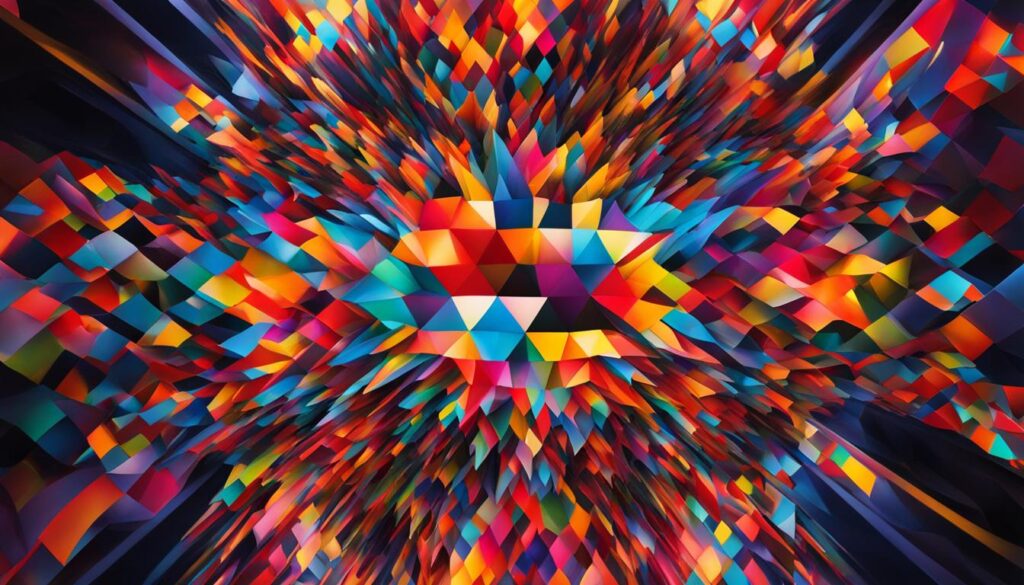

The Various Forms of Art: Painting, Sculpture, Literature, Music, and More
Art takes many forms, encompassing a diverse range of creative expressions that captivate and inspire. From painting to sculpture, literature to music, each form of art offers a unique experience and aesthetic. Let’s explore some of the different art forms and the beauty they bring to the world.
Painting
Painting is perhaps one of the most recognizable and celebrated forms of art. Artists use various techniques and mediums, such as oil, acrylic, and watercolor, to create visual representations of their ideas and experiences. From realistic landscapes to abstract expressions, painting allows artists to capture the beauty and complexity of the world around us on canvas.
Sculpture
Sculpture brings art to life in three-dimensional form. Artists use various materials, such as stone, metal, wood, or clay, to shape and mold their creations. Sculptures can range from classical figures to contemporary installations, exploring the boundaries of form, space, and texture. This art form engages our senses, inviting us to interact with and experience art in a tactile way.
Literature
Literature transports us to different worlds and challenges our perspectives. Through the written word, authors craft stories, poems, and essays that evoke emotions, provoke thoughts, and ignite the imagination. Literature allows us to explore complex themes, delve into the depths of human experience, and connect with characters and narratives that resonate with us on a personal level.
Music
Music transcends language and touches our souls. It has the power to evoke emotions, set the mood, and create a sense of unity. From classical symphonies to pop ballads, music spans genres and styles, resonating with people of all backgrounds. Whether through singing, playing instruments, or composing, musicians bring melodies and harmonies to life, creating an auditory experience that moves and inspires.
Theater
Theater combines various art forms, including acting, music, set design, and storytelling. It brings narratives to life on stage, captivating audiences with performances that evoke laughter, tears, and introspection. Theater allows actors to embody characters, directors to create immersive worlds, and audiences to engage with thought-provoking stories and themes.
| Art Form | Description |
|---|---|
| Painting | A visual art form that uses various mediums and techniques to create visual representations of ideas and experiences on canvas. |
| Sculpture | A three-dimensional art form that uses various materials to shape and mold objects, exploring form, space, and texture. |
| Literature | A written art form that encompasses stories, poems, and essays, allowing us to explore complex themes and connect with narratives. |
| Music | An auditory art form that transcends language, evoking emotions and creating a sense of unity through melodies and harmonies. |
| Theater | An art form that combines acting, music, set design, and storytelling to bring narratives to life on stage, engaging audiences with performances and thought-provoking stories. |
These are just a few examples of the many forms of art that exist in the world. Each form offers its own unique experience and allows artists to express their creativity and vision in different ways. Whether it’s a captivating painting, a thought-provoking sculpture, an inspiring piece of literature, or a beautiful melody, art has the power to touch our hearts, stimulate our minds, and enrich our lives.


Art Throughout History: From Ancient Civilizations to Modern Times
Art has played an integral role in human history, spanning across ancient civilizations to modern times. Through the ages, art has served as a visual record of cultural, social, and intellectual movements, reflecting the values and aspirations of different societies.
Ancient art, spanning from cave paintings to ancient Egyptian sculptures, provides us with glimpses into the lives and beliefs of our ancestors. These artworks not only showcase the artistic skills of ancient civilizations but also offer insights into their rituals, mythology, and social structures.
As time progressed, art underwent transformative periods, such as the Renaissance and Impressionist movements. The Renaissance saw a rebirth of classical aesthetics and a focus on realism, with artists like Leonardo da Vinci and Michelangelo creating masterpieces that are revered to this day. The Impressionist movement, on the other hand, challenged traditional artistic conventions by exploring the play of light and color, giving birth to groundbreaking works by artists like Claude Monet and Edgar Degas.
| Art Movement | Key Artists | Characteristics |
|---|---|---|
| Ancient Art | Anonymous artists | Depiction of mythology and social life |
| Renaissance | Leonardo da Vinci, Michelangelo | Realism, perspective, and classical influences |
| Impressionism | Claude Monet, Edgar Degas | Play of light and color, capturing fleeting moments |
Art has always been a mirror of our civilization, reflecting the beauty, struggles, and progress of humanity throughout history. From cave paintings to digital art, it continues to evolve, adapt, and inspire, giving voice to the human experience.
The journey of art throughout history is a testament to our innate desire for self-expression and the universal language of creativity. By studying the art of different eras, we gain a deeper understanding of our past, engage with diverse perspectives, and appreciate the rich tapestry of human culture.
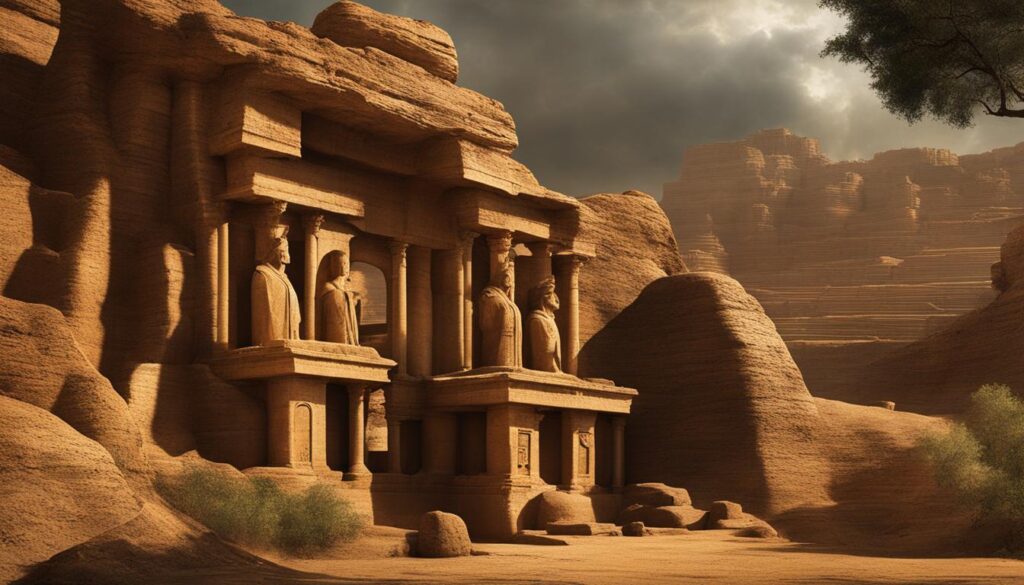

The Role of Art in Society: Reflection, Communication, and Social Change
Art has always played a significant role in society, serving as a powerful tool for reflection, communication, and social change. Through artistic expression, artists have the ability to provoke emotions, challenge norms, and inspire dialogue on important social issues. Art acts as a mirror that reflects the collective consciousness of a society, capturing the triumphs, struggles, and aspirations of its people.
One of the key roles of art in society is to act as a catalyst for reflection. It has the ability to make us pause, question, and contemplate the world around us. Art has a unique way of presenting different perspectives and shedding light on the diverse experiences of individuals and communities. By engaging with art, we are encouraged to think critically, broaden our horizons, and challenge our own beliefs and biases.
Art also serves as a powerful form of communication. It transcends language barriers and has the ability to connect people from all walks of life. Through their creations, artists can convey complex emotions and ideas, sparking conversations that promote empathy, understanding, and unity. Art has the power to move us, to make us feel connected to one another, and to bridge the gaps that sometimes divide us.
Art has the power to transcend political and social barriers and promote social change.
Perhaps one of the most significant roles of art in society is its ability to drive social change. Throughout history, artists have used their work as a platform to challenge injustices, advocate for equality, and inspire movements for positive transformation. Art has the power to raise awareness, mobilize communities, and shape public opinion. It can ignite the spark that drives societal progress and helps create a better world for future generations.
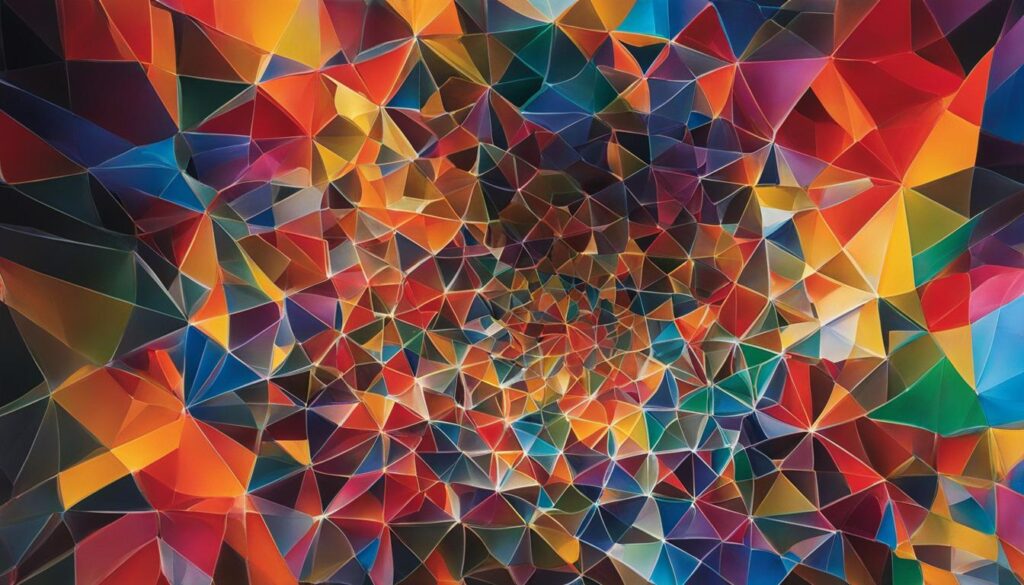

In conclusion, art plays a vital role in society by reflecting our collective consciousness, promoting communication, and driving social change. It has the power to challenge, inspire, and transform lives. By embracing art and its role in society, we can foster a deeper understanding and appreciation for the diverse perspectives and experiences that make up our world.
The Power of Art: Inspiring, Challenging, and Transforming
Art possesses a remarkable ability to inspire, challenge, and transform our lives. Through its diverse forms and expressions, art has the power to ignite the imagination and evoke deep emotional responses. Whether it’s a captivating painting, a moving piece of music, or a thought-provoking sculpture, art has the capacity to touch our souls and leave a lasting impression.
Art has the incredible ability to inspire us, opening our minds to new possibilities and perspectives. It invites us to see the world through different lenses and encourages us to question the status quo. Art awakens our creativity and stimulates our senses, fueling innovation and pushing boundaries. It has the power to provoke thought and ignite change, inspiring us to seek deeper meaning and understanding in the world around us.
Moreover, art has the unique ability to challenge our preconceived notions and reshape our perspectives. It can confront uncomfortable truths, provoke introspection, and spark important conversations. Art has the capacity to challenge societal norms, break down barriers, and promote social change. It has been a powerful tool for advocacy and activism, empowering artists to use their creativity as a catalyst for progress and transformation.
| Art Inspiration | Art Transformation |
|---|---|
| Art inspires us to think differently and explore new ideas. | Art has the power to transform lives, sparking personal growth and introspection. |
| Art encourages us to embrace creativity and innovation in all aspects of life. | Art can transform our perspectives and challenge our understanding of the world. |
| Art stimulates our imagination, fueling new possibilities and avenues of exploration. | Art can ignite social change, challenging societal norms and advocating for justice. |
Art is not just an object or a performance; it is a catalyst for inspiration, transformation, and connection. It invites us to explore our innermost thoughts and emotions, encouraging us to delve deeper into the human experience. Art has the power to transcend barriers, foster empathy, and bridge the gap between different cultures and perspectives. It is a testament to the boundless potential of human creativity and the enduring impact it can have on our lives.
Art is a universal language that speaks to the depths of our souls. It has the power to inspire, challenge, and transform us in profound ways. From the smallest brushstroke to the grandest symphony, art has the ability to evoke emotions, provoke thoughts, and ignite change. By embracing the power of art, we can tap into our own creativity, expand our horizons, and embark on a transformative journey of self-discovery and growth.


Conclusion
In conclusion, art holds an enduring significance in our lives and society. It allows us to define art on our own terms, appreciating its diverse forms and expressions. Art not only serves as a reflection of our humanity but also stimulates our emotions, challenges our perspectives, and sparks important conversations.
By embracing art appreciation, we can develop a deeper understanding and connection to the creative world. Art has the power to inspire, transform, and challenge us, igniting our imagination and pushing boundaries. It fosters personal and societal growth, encouraging empathy, understanding, and unity.
Throughout history, art has played a vital role in shaping culture and influencing social change. It acts as a visual record of our collective human experience, from ancient civilizations to modern times. Art serves as a catalyst for reflection, communication, and positive transformation in our society.
Thus, let us celebrate the enduring significance of art and its ability to define, inspire, and transform our lives.
FAQ
How do you define art?
Art is a form of human expression that evokes emotions, stimulates thoughts, and captures the essence of the human experience.
What is the philosophy of art?
The philosophy of art delves into the deeper questions surrounding art’s purpose and significance, including its role in challenging norms and promoting social change.
What is the essence of art?
At the heart of art lies human expression, creativity, and emotion. It serves as a form of communication and allows artists to share their unique perspectives with the world.
What are the various forms of art?
Art takes shape in countless forms, including painting, sculpture, literature, music, and more. Each form offers a unique experience and aesthetic.
What is the role of art in society?
Art plays a vital role in society by reflecting our collective consciousness, challenging norms, and promoting empathy and understanding.
What is the power of art?
Art possesses the inherent power to inspire, challenge, and transform. It ignites the imagination, encourages critical thinking, and evokes profound emotional responses.
